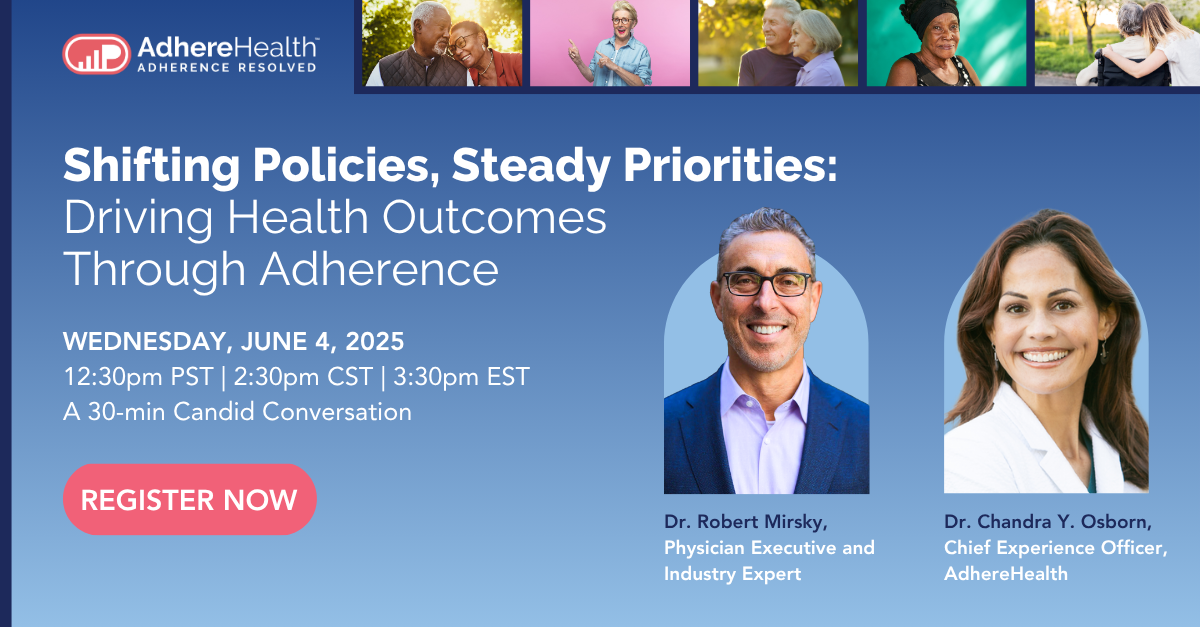Published on .
Member engagement is a cornerstone of health plan success. When members are actively involved in their care, they’re more likely to take medications as prescribed, attend preventive appointments and make informed decisions about their health. For Medicare Advantage plans in particular, strong engagement is critical to drive Stars performance and boost health outcomes through improved adherence.
Today’s policy environment has introduced new layers of uncertainty. As Medicare Advantage (MA) plans navigate potential regulatory changes under the current administration, long-term planning may feel more complicated than ever. But regardless of what comes to pass, one thing remains clear: sustained member engagement, especially around medication adherence and healthy behaviors, continues to be a critical driver of quality performance.
The challenge of member engagement
Despite its importance, increasing engagement remains one of the biggest challenges facing health plans today. Many members face behavioral barriers such as forgetfulness, low motivation or competing life priorities. Others experience social determinants of health (SDOH) challenges with basic needs like food insecurity or lack of transportation, making it harder to focus on the larger goal of obtaining medication and attending doctor’s appointments.
Health literacy is another challenge. Nearly 9 in 10 adults in the U.S. struggle to understand and act on everyday health information, which makes even well-intended outreach ineffective if not communicated clearly.
Additionally, haphazard communication, delivered through a single-source channel or created without consideration to messaging that will resonate, can overwhelm or confuse members rather than support them. The result is missed opportunities to connect with members in the channel they prefer and the way that will have the most impact.
Best practices to increase member engagement
To break through these barriers, health plans must adopt a strategic, member-centered approach that supports members throughout their entire healthcare journey. The following best practices offer a roadmap to drive meaningful engagement and better health outcomes.
Successful engagement isn’t about doing more—it’s about doing it differently. These engagement strategies help health plans create lasting member relationships that drive medication adherence for improved health outcomes.
Anticipate needs with predictive analytics
Effective engagement depends on reaching members at the right time with the right support. Predictive analytics help health plans do just that by identifying which members are likely to face challenges with adherence or care plan follow-through before those issues escalate.
By analyzing clinical data, pharmacy claims and social risk factors, plans can proactively anticipate when a member might miss a medication refill, delay a provider visit or encounter a barrier to adherence. These insights allow outreach teams to intervene early, offer targeted support and help members stay on track with their medications.
Engage through omnichannel communication
Members vary widely in how they prefer to communicate. Some respond to texts or emails. Others require a phone call or support from a caregiver.
Omnichannel outreach helps increase the chances of engagement by initiating contact across multiple channels—phone, text, email or mail—so members are more likely to receive and respond to a message. By creating more opportunities to connect, plans improve their ability to reach even the hardest-to-engage members.
Once contact is made, plans can continue follow-up through the member’s preferred channel, reinforcing trust and reducing friction. This coordinated approach creates a more seamless experience for the member and supports long-term engagement.
Leverage behavioral science to break through barriers
Behavioral science helps explain why people often don’t take action even when it’s in their best interest. There are many evidence-based techniques that can support health-related decision-making and behavior change, and the right approach depends on the member’s specific barriers and mindset.
A few examples include motivational interviewing, habit reinforcement and loss aversion—all of which can help move members from intention to action, especially those who are hesitant, overwhelmed or disengaged.
It helps for health plans to train outreach clinicians in behavioral science-based techniques or partner with a vendor that provides access to clinicians with this valuable skill under their belts. And it pays off: behavioral science–based interventions have been shown to increase adherence by up to 20%.
Don’t discount human-to-human connections
While automation has its place, meaningful engagement often starts with a human voice. Live conversations with trained staff, such as care navigators or pharmacy technicians, create opportunities to listen, understand and guide.
For older or higher-risk members, these personal interactions provide reassurance and clarity. Research supports this approach: one 2023 study found that live outreach significantly improved medication adherence among older adults with chronic conditions.
It’s often the combination of digital and human-centered techniques that help drive engagement. Rather than reliance solely on one channel, a layered approach helps ensure a plan’s ability to meet members “where they are” and drive desired behaviors.
Activate the member’s full care team
Members are more likely to act on advice when it comes from someone they trust, and that’s often a provider or pharmacist. In fact, more than 80% of members say they trust their doctor over their health plan when making healthcare decisions.
That’s why plans should look beyond the member alone and involve the broader care team. Coordinated outreach to providers and pharmacists helps align care goals, close gaps and reinforce adherence messages.
One especially effective tactic is delivering care gap alerts and adherence-related messages directly to the provider’s electronic health record (EHR) message center. Integrating communication into existing clinical workflows ensures the information is timely, actionable and more likely to result in intervention during a patient visit.
Address and resolve barriers to care
Engagement can falter for many reasons—some social, others behavioral. Members may face challenges like food insecurity, housing instability or lack of transportation. But they may also struggle with low motivation, distrust of the healthcare system or uncertainty about what steps to take.
Health plans should aim to identify and resolve both types of barriers. Screening for unmet social needs and offering practical support, such as connecting members to community resources or arranging transportation, can remove critical obstacles to care. At the same time, behavioral barriers can be addressed through empathetic conversations, simplified messaging and strategies rooted in behavioral science.
By proactively tackling both the external and internal challenges members face, plans can create a more supportive experience that fosters long-term engagement and better health outcomes.
Design with clarity and health literacy in mind
Effective communication begins with clarity. Outreach materials, phone scripts and medication instructions should all be written at a low reading level, free of jargon and designed for quick understanding.
This is especially important for Medicare members, many of whom may struggle with complex language or cognitive overload. Clear communication improves comprehension, increases action and reduces confusion or missteps.
Focus on engagement as a year-long journey
Engagement isn’t a one-time event; it requires ongoing attention and support throughout the entire plan year. By monitoring members continuously, plans can identify changes in health status, track adherence trends and stay ahead of potential issues.
Partnership with the right technology vendor helps plans leverage ongoing clinical indicators and behavior patterns to see the full picture of a member’s healthcare journey. This enables timely, relevant outreach when support is needed—whether it’s a refill reminder, preventive care prompt or help addressing a care gap.
Sustained, data-driven engagement helps members stay connected to their care, improving both health outcomes and satisfaction over time.
Conclusion
Increasing member engagement requires a thoughtful blend of science, data and human connection. Plans that want to improve medication adherence and health outcomes must move beyond a one-size-fits-all approach and tailor their strategy to meet the needs of the entire member population. When done right, engagement becomes more than an initiative: it becomes a catalyst for transformation.
Authored by:
Levi Sanderson, PharmD.
Senior Director of Clinical Solutions at AdhereHealth



